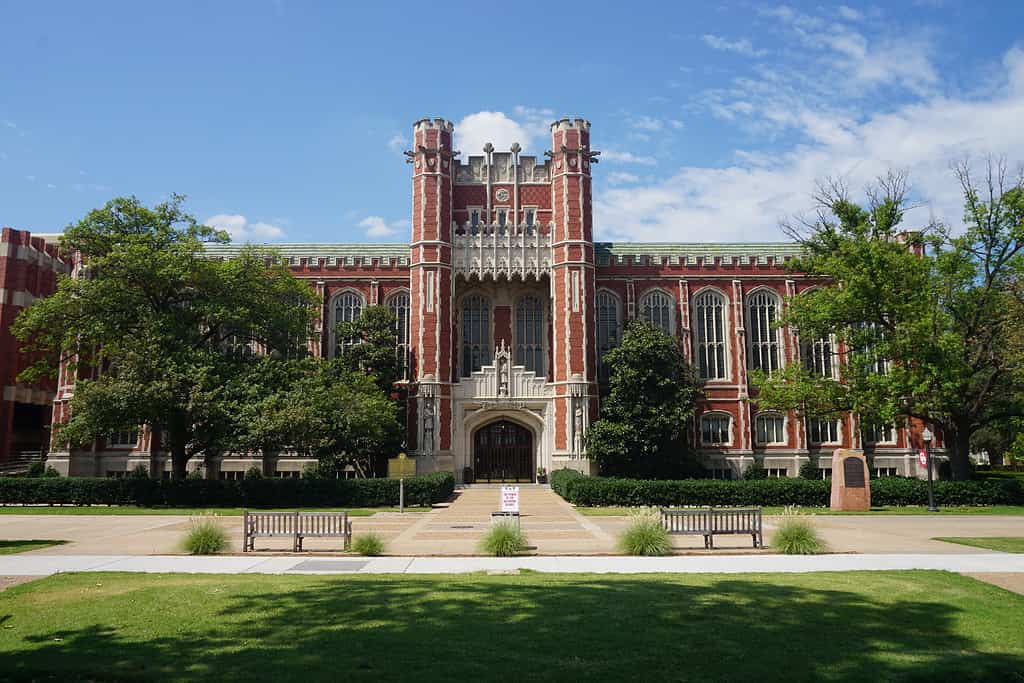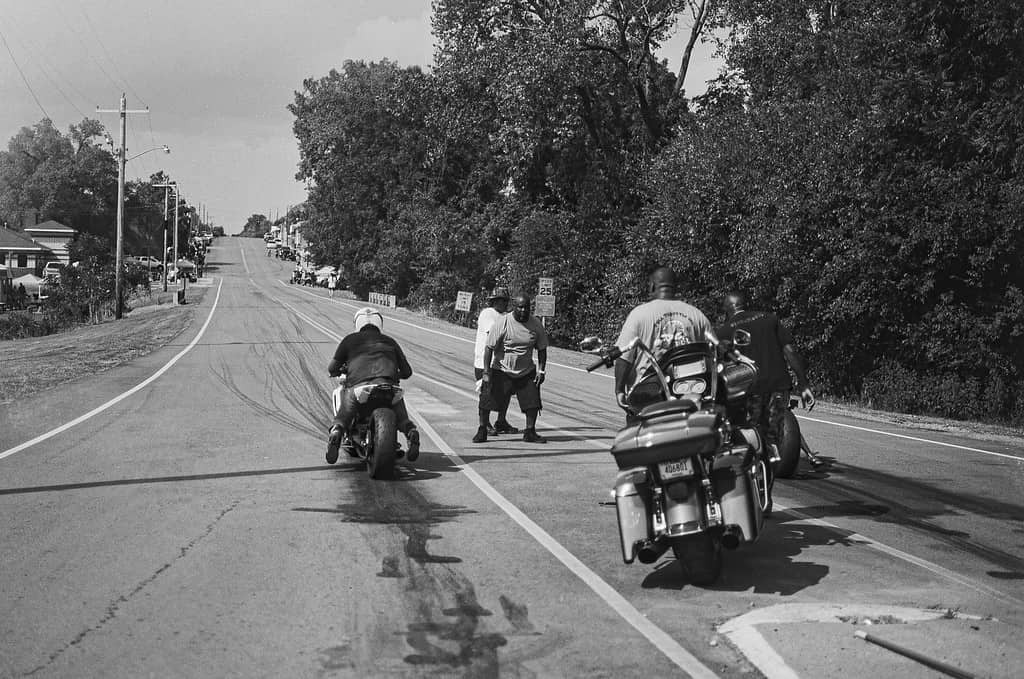Throughout history, the land that we now know as Oklahoma has seen countless historical events occur on its soil. Currently, this state is home to 22 National Historic Landmarks with varying significance. Although it was incredibly hard, we’ve chosen some of the most interesting of these landmarks to explore. Let’s dive into six of Oklahoma’s coolest National Historic Landmarks.
1. Bizzell Memorial Library

The Bizzell Memorial Library is five stories tall.
©Michael Barera / CC BY-SA 4.0 - License
Located at the University of Oklahoma, the Bizzell Memorial Library is an architectural work of art. This building was designed in the iconic Gothic revival style, and the content of the interior rivals the exterior. Shockingly, over five million books are present at this library spread over eight satellite buildings. However, this is not the reason why this library is historically significant. According to the United States Department of the Interior, “Bizzell Library is significant for its association with the historical movement to racially desegregate public higher education in the South in the mid-twentieth century and the federal government’s position on eliminating racial segregation within a democratic society.” Because of this, Bizzell Memorial Library was designated a National Historic Landmark.
2. Wheelock Academy

Wheelock Academy is named in honor of Eleazar Wheelock.
©issam elhafti/iStock / Getty Images Plus via Getty Images
Located close to Millerton, Wheelock Academy was once a boarding school for young Choctaw girls living in Oklahoma. This school first opened its doors in 1832 and remained in near continuous use until 1955. During its heyday, students spent their time taking lessons in English, reading, writing, business, and a variety of home economics such as sewing and household chores. Ultimately, the implementation of the Curtis Act is what caused Wheelock to close. This was an amendment that forced tribal governments to disband, which in turn caused tribal schools to end operations. Just 10 short years after Wheelock Academy closed for good, it became a National Historic Landmark in 1965.
3. Boley Historic District

The town of Boley, Oklahoma still has an active population in the present day.
©JamesPrattOK / CC BY-SA 4.0 - License
Founded in 1903, Boley is one of the most famous all-black towns in the state of Oklahoma, and the largest by size. According to the Oklahoma Historical Society, “By 1911 Boley boasted more than four thousand citizens and many businesses, including two banks and three cotton gins. Booker T. Washington, founder of the National Negro Business League and the Tuskegee Institute, in Alabama, visited the town in 1905 and proclaimed it ‘the most enterprising and in many ways the most interesting of the Negro towns in the United States.'” Like any other rural town, Boley has certainly faced its fair share of hardships throughout the years. Despite this, it is still thriving to this day, and part of the downtown area has become a National Historic Landmark.
4. 101 Ranch Historic District

Many animals lived at the 101 Ranch in its heyday. Cows, ponies, and hogs were among them.
©Cl7525 / CC BY 3.0 - License
Col. George W. Miller founded the 101 Ranch back in the late 1800s. During this time, various businesses were erected on this land, and dozens of people found themselves employed here. When Miller passed in 1903, he left the ranch to his three sons. A neighbor suggested that the sons set up a Wild West show to drum up more business. The brothers had great success in this venture, offering a show similar in style to a rodeo. Although the road was somewhat rocky initially, the 101 Ranch Wild West Show ultimately became so popular that it went on tour globally. While the Miller Brothers 101 Ranch is comprised of over 100,000 acres of land in total, the 101 Ranch Historic District is only 82 acres. A few original buildings still remain standing today.
5. Washita Battlefield

The visitor center at the Washita Battlefield National Historic Site is open seven days a week.
©AZGUNZ, /CC BY-SA 4.0 - License
Unlike the other National Historic Landmarks we’ve reviewed today, the Washita Battlefield has a story that is quite tragic. This site is located near Cheyenne, Oklahoma and was once the homeland of a Southern Cheyenne Native American village. In November 1868, Lt. Col. George Armstrong Custer spearheaded a surprise attack on Chief Black Kettle. His efforts were successful. Sadly, the Cheyenne people lost many loved ones in this bloodbath. The area where this battle took place is part of the Washita Battlefield National Historic Site. Today, guests can visit a small museum to learn about the history of this site and appreciate the natural beauty of the land.
6. Honey Springs Battlefield

The Honey Spring Battlefield site is comprised of roughly 1,000 acres of land.
©Дмитрий Ларичев/iStock via Getty Images
Much like the Washita Battlefield National Historic Landmark, the Honey Spring Battlefield is an important yet tragic part of Oklahoma’s history. Although the Confederacy and Union soldiers clashed many times, this battle was different in that white soldiers were in the minority on the battlefield. The Battle of Honey Springs was fought primarily by Native American soldiers on both sides and many African American soldiers on the Union’s side. Although the battle was bloody, it was not long fought, and it ended mere hours after it began. The Union claimed a victory over the Confederacy, likely due to their larger numbers and greater quantity of resources. This was one of the largest and most significant battles that occurred in Indian territory during the Civil War. Because of this, it was named a National Historic Landmark in 2013.
The photo featured at the top of this post is © issam elhafti/iStock / Getty Images Plus via Getty Images
Thank you for reading! Have some feedback for us? Contact the AZ Animals editorial team.






